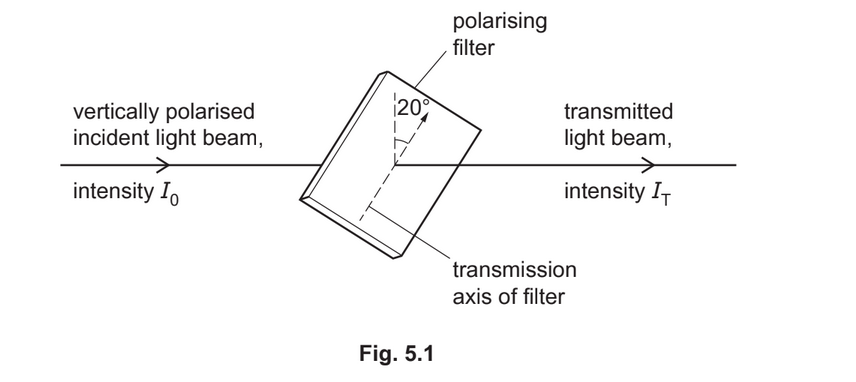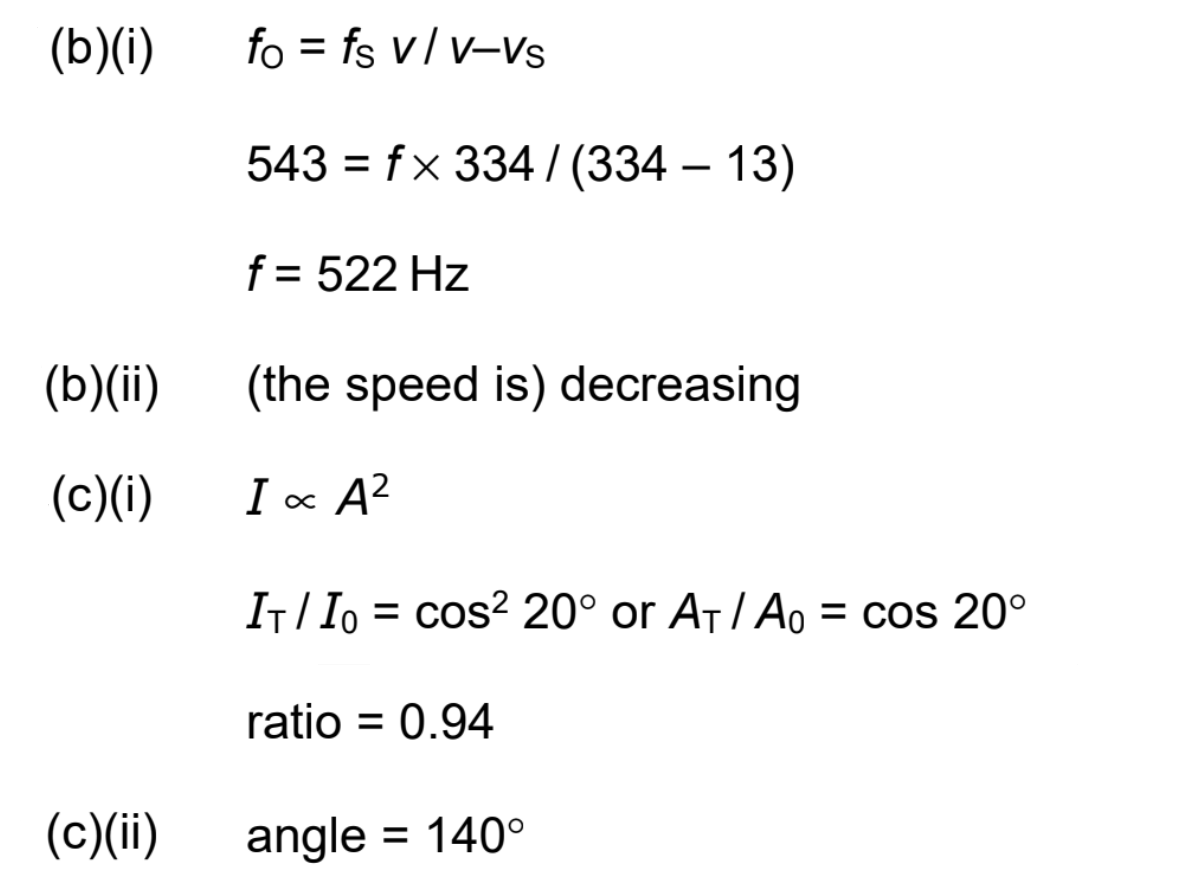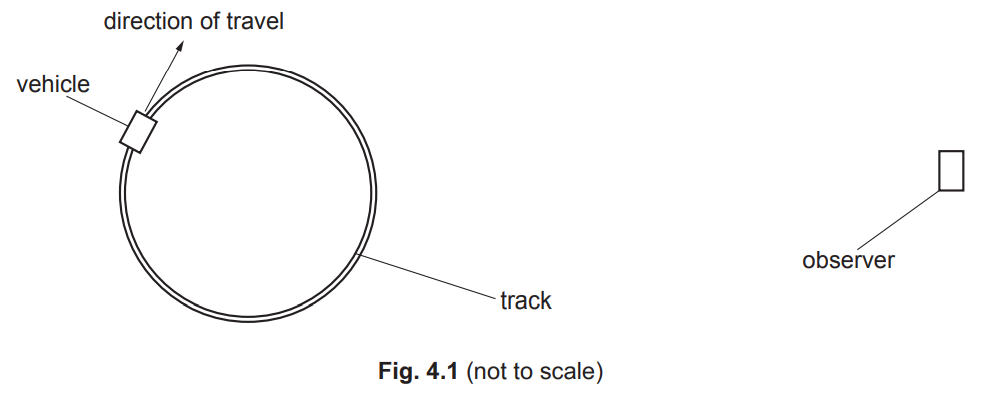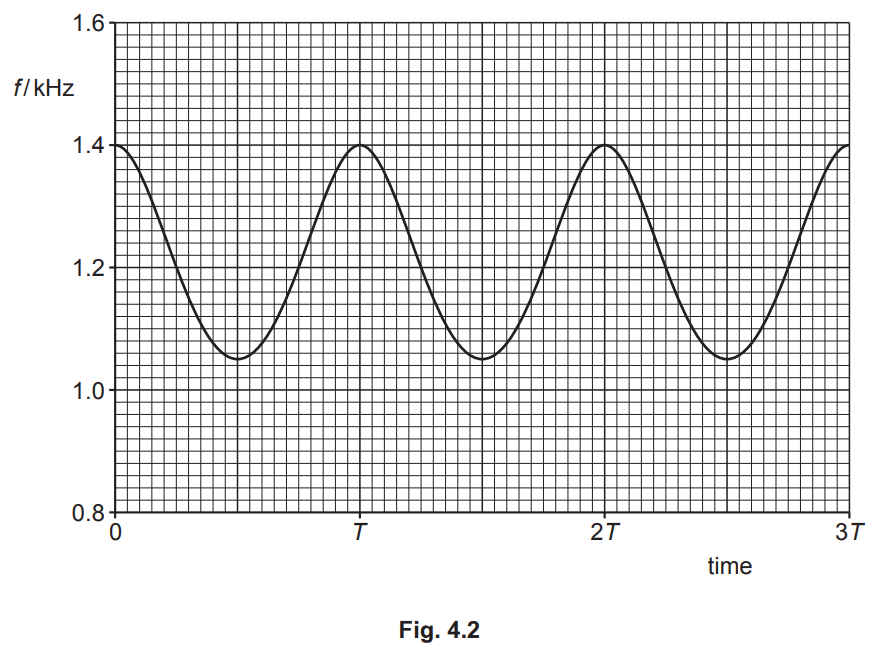Question
(a) (i) State the conditions required for the formation of a stationary wave.
……………………………………………………………………………………………. [2]
(ii) State the phase difference between any two vibrating particles in a stationary wave between two adjacent nodes.
phase difference = ………………………………………………..° [1]
(b) A motorcycle is travelling at 13.0 m/s along a straight road. The rider of the motorcycle sees a pedestrian standing in the road directly ahead and operates a horn to emit a warning sound.
The pedestrian hears the warning sound from the horn at a frequency of 543Hz. The speed of the sound in the air is 334 m/s.
(i) Calculate the frequency, to three significant figures, of the sound emitted by the horn.
frequency = ……………………………………………. Hz [2]
(ii) The motorcycle rider passes the stationary pedestrian and then moves directly away from her. As the rider moves away, he operates the horn for a second time. The pedestrian now hears sound that is increasing in frequency.
State the variation, if any, in the speed of the motorcycle when the rider operates the horn for the second time…………………………………… [1]
(c) A beam of vertically polarised monochromatic light is incident normally on a polarising filter, as shown in Fig. 5.1.

The filter is positioned with its transmission axis at an angle of 20° to the vertical. The incident light has intensity \(I_0\) and the transmitted light has intensity \(I_T\).
(i) By considering the ratio \(\frac{I_T}{I_0}\) calculate the ratio 
Show your working. ratio = ………………………………………………… [3]
(ii) The filter is now rotated, about the direction of the light beam, from its starting position shown in Fig. 5.1. The direction of rotation is such that the angle of the transmission axis to the vertical initially increases.
Calculate the minimum angle through which the filter must be rotated so that the intensity of the transmitted light returns to the value that it had when the filter was at its starting position.
angle = ………………………………………………. ° [1]
Answer/Explanation
Ans:
(a)(i) (two) waves travelling (at same speed) in opposite directions overlap waves (of the same type) have same frequency/wavelength
(a)(ii) phase difference = 0

Question
(a) By reference to the direction of transfer of energy, state what is meant by a longitudinal wave. [1]
(b) A vehicle travels at constant speed around a wide circular track. It continuously sounds its
horn, which emits a single note of frequency 1.2kHz. An observer is a large distance away
from the track, as shown in the view from above in Fig. 4.1.

Fig. 4.2 shows the variation with time of the frequency f of the sound of the horn that is
detected by the observer. The time taken for the vehicle to travel once around the track is T.

(i) Explain why the frequency of the sound detected by the observer is sometimes above
and sometimes below 1.2kHz. [2]
(ii) State the name of the phenomenon in (b)(i). [1]
(iii) On Fig. 4.1, mark with a letter X the position of the vehicle when it emitted the sound that
is detected at time T. [1]
(iv) On Fig. 4.1, mark with a letter Y the position of the vehicle when it emitted the sound that
is detected at time \( \frac{9T}{4}\) [1]
(c) The speed of the sound in the air is 320ms–1.
Use Fig. 4.2 to determine the speed of the vehicle in (b).
speed = ………………………………………… ms–1 [3]
[Total: 9]
Answer/Explanation
Ans
(a) oscillations (of particles) are parallel to (the direction of) energy transfer
(b) (i) (frequency varies as) vehicle moves relative to (stationary) observer
(vehicle) moving towards (observer) gives higher (observed) frequency (than 1.2 kHz) and (vehicle) moving away (from
observer) gives lower (observed) frequency (than 1.2 kHz)
(b) (ii) Doppler effect
(b) (iii) position of vehicle labelled ‘X’ at top (12 o’clock) position on track
(b) (iv) position of vehicle labelled ‘Y’ at right-hand edge (3 o’clock) position on track B1
(c) maximum frequency = 1.40 (kHz) or 1.40 × 103 (Hz)
1.40 = (1.2 × 320) / (320 –v)
v = 46ms–1
or
minimum frequency = 1.05 (kHz) or 1.05 × 103 (Hz)
1.05 = (1.2 × 320) / (320 + v)
v = 46ms–1
